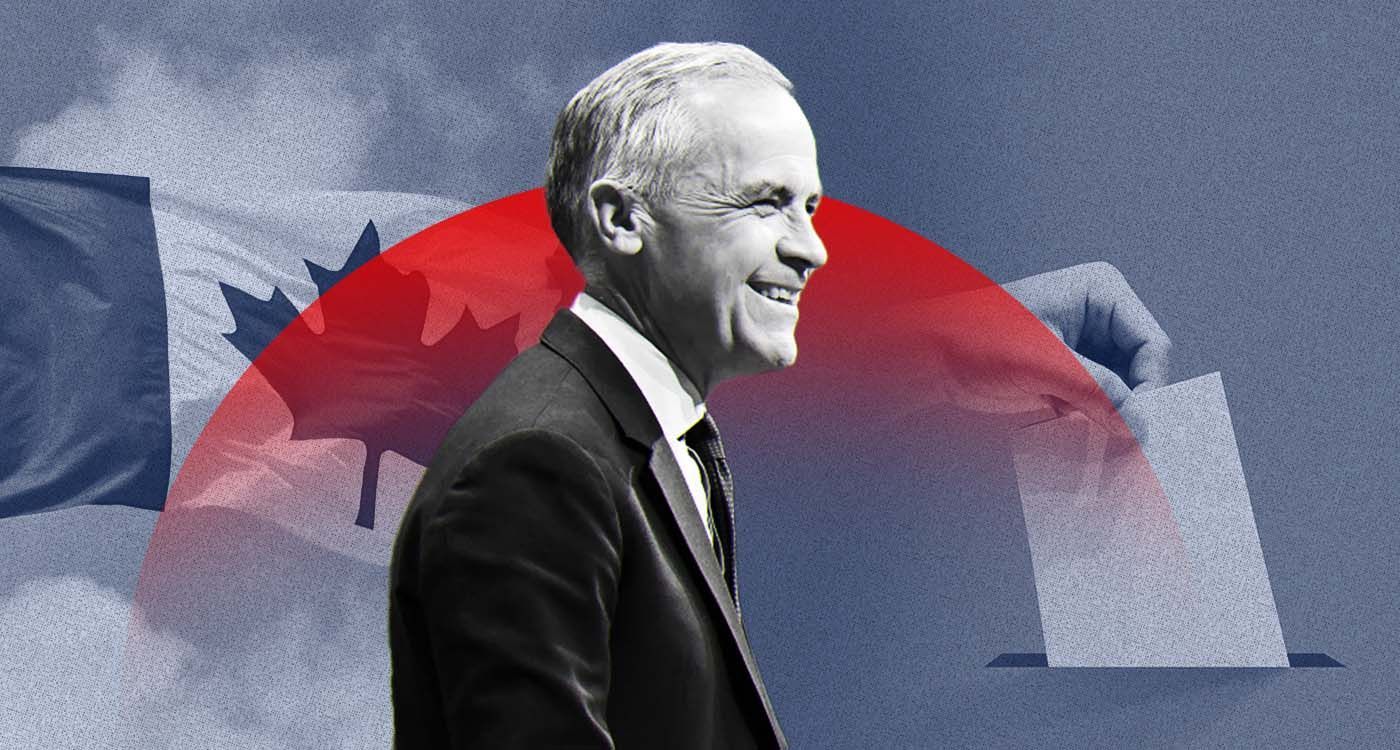- Home
- Middle East
- The Liberal Comeback: Carney’s Impossible Equation

©This is Beirut
On April 28, Canadians went to the polls to elect a new Assembly and, indirectly, to choose their next head of government. While the latest polls predicted a tight race, the final result confirmed an ongoing trend: the Liberal Party, led for the first time by former Bank of Canada Governor Mark Carney, once again triumphed over Pierre Poilievre’s Conservatives—Poilievre even lost his seat. This victory would have seemed improbable not long ago, given how weakened the party appeared. How can such a comeback be explained? And what does it reveal about the state of Canada’s political landscape?
To fully grasp the stakes of this election, it is important to place it within its political and economic context. The defining element of the campaign was, without a doubt, the resurgence of the Liberal Party of Canada, alongside the sharp decline of the Conservatives. Just six months ago, a sweeping victory for the right appeared inevitable. Then-Prime Minister Justin Trudeau’s popularity had plummeted to a -52 rating in December, while the national economy stagnated, with GDP per capita in steady decline throughout 2022 and 2023. Polls showed Pierre Poilievre’s Conservatives leading by more than 25 points, and the only question seemed to be the scale of their anticipated win.
Momentum in Canada’s federal election began shifting as early as January, with the Liberal Party steadily gaining support while the Conservatives lost traction. By the time the final pre-election polls were released, the Liberals had edged slightly ahead.
Two key factors help explain this reversal—foremost among them, the influence of Donald Trump. The former US president’s repeated threats of a trade war and his provocative remarks about annexation pushed foreign policy to the forefront of the campaign, sidelining domestic concerns. The central question became clear: Which leader is better equipped to stand up to Washington?
According to an Ipsos poll, 49% of Canadians say Liberal leader Mark Carney is best positioned to negotiate with Trump, compared to just 33% who favor Conservative leader Pierre Poilievre. Poilievre’s combative style—once effective in attacking Prime Minister Justin Trudeau—appeared increasingly polarizing in the context of bilateral tensions.
The second factor is personal: Mark Carney enjoys significantly higher favorability ratings than his rivals. According to the Angus Reid Institute, his approval remained steady at around +15 throughout the campaign, while Poilievre’s lingered at -20. This unfavorable trend already spelled trouble for Poilievre and the Conservative Party—but it became even more problematic under Canada’s electoral system. Canada uses a first-past-the-post system, which has historically favored the Liberals. In this majoritarian model, each of the 343 geographical constituencies—or “ridings”—awards its seat to the candidate who finishes first, with no adjustment for the overall national vote share. This system favors parties whose support is well distributed geographically—precisely the case for the Liberals, whose backing is relatively even across the country. In contrast, the Conservative base is more concentrated in certain provinces.
This dynamic played an even more decisive role as the Liberal surge in the polls came largely at the expense of the New Democratic Party (NDP), a left-wing party that normally draws a significant share of the progressive vote. The NDP’s erosion allowed for consolidation of the left-leaning vote, reducing the risk of vote-splitting that could have benefited the Conservatives. Thus, by mid-March—even as the Conservatives still held a three-point national lead—the projection site “338Canada” was already forecasting more seats for the Liberals due to a more efficient distribution of their vote. That scenario is precisely what materialized.
Liberal leader Mark Carney led his party to a victory large enough to form a government. However, the Liberals fell just short of the absolute majority they had been aiming for.
In practical terms, this means that Mark Carney is set to remain Prime Minister—a position he has held only since March, following Justin Trudeau’s resignation. The Liberals now hold 169 seats—three short of the 172 required for an outright parliamentary majority. Under these circumstances, Carney may attempt to renew some form of alliance with the New Democratic Party, which would allow him to govern more stably—similar to the agreement made by Trudeau in 2021, before the NDP withdrew in September of last year. However, such an alliance would not come without challenges. It would inevitably demand political concessions, as the NDP is significantly further to the left than the Liberal Party. It would also represent a personal cost for Carney himself, whose more centrist, technocratic stances contrast with those of his predecessor Trudeau—already considered moderate compared to the NDP platform. Ultimately, the future of this potential coalition will depend heavily on the identity of the NDP’s next leader, which remains unknown at this point.
What remains to be seen now is whether Mark Carney can turn this relative victory into lasting political authority. A respected economist and reassuring technocratic figure, he inherits a fragmented political landscape, where partisan lines remain deeply polarized. His first—and arguably most urgent—task will be to manage the complex and potentially explosive relationship with a resurgent Donald Trump on the North American stage. But beyond bilateral relations, domestic unity emerges as the true challenge. As CNN recently summarized, “While Canadians are united against Trump, they remain divided on everything else.”
Can Carney become more than just a shield against Washington, and truly unite a country deeply divided on its economic, social and identity orientations? That will be the test—of both his stature and his style.
Read more




Comments